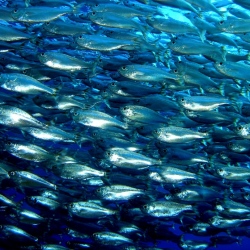
A new study finds Pacific ocean is taking in heat at the most rapid rate in many thousands of years, providing yet another indicator of global warming.
The authors of the study, published in Science magazine, analyzed Pacific ocean sediment cores to reconstruct quantities of heat stored at the middle depths of the western Pacific going back 10,000 years.
They found a general cooling trend – with some peaks and valleys along the way – until warming commences in the last few hundred years punctuated by a spike in the modern era, over the last 60 years.
Here’s how Columbia University describes the temperature evolution:
From about 7,000 years ago until the start of the Medieval Warm Period in northern Europe, at about 1100, the water cooled gradually, by almost 1 degree C, or almost 2 degrees F. The rate of cooling then picked up during the so-called Little Ice Age that followed, dropping another 1 degree C, or 2 degrees F, until about 1600.
The authors attribute the cooling from 7,000 years ago until the Medieval Warm Period to changes in Earth’s orientation toward the sun, which affected how much sunlight fell on both poles. In 1600 or so, temperatures started gradually going back up. Then, over the last 60 years, water column temperatures, averaged from the surface to 2,200 feet, increased 0.18 degrees C, or .32 degrees F.
The rate of change over the last 60 years is roughly 15 times faster than any other period, the authors conclude.
